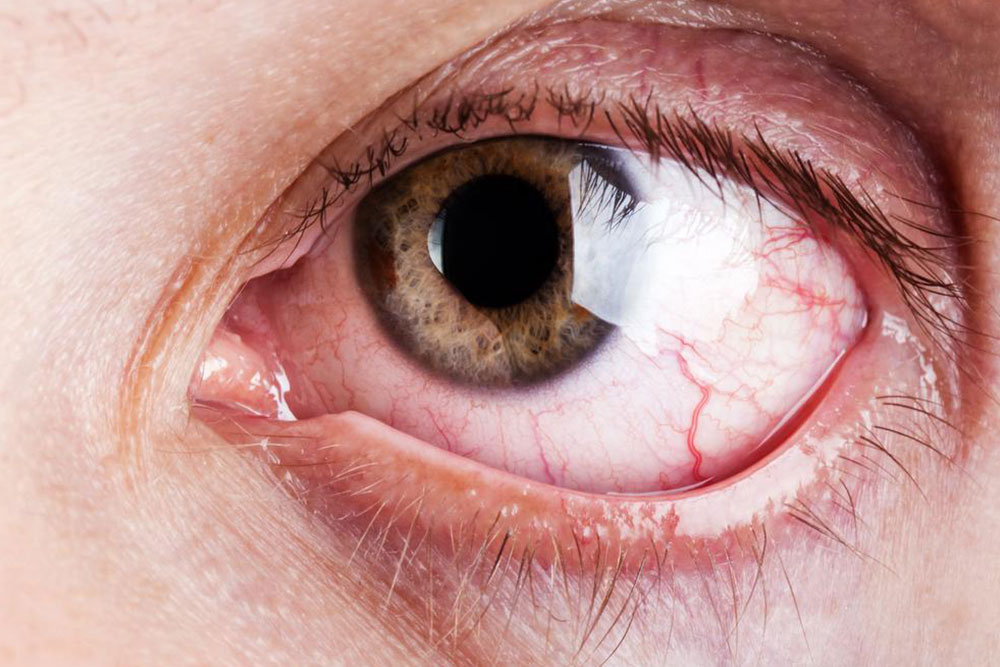Comprehensive Guide to the Top 7 Causes of Eye Discomfort and How to Address Them
Discover the top 7 causes of eye discomfort and learn effective ways to address them. From infections to allergies and strain, this detailed guide provides insights into symptoms, prevention, and treatment options, helping you maintain healthy eyes and quick relief from discomfort.

Eye discomfort is a common issue faced by many individuals and can significantly impact daily life, from reducing productivity to impairing sleep quality. Whether it's a mild irritation or a severe stabbing sensation, understanding the causes of eye discomfort is essential for effective relief and maintaining overall eye health. This comprehensive guide explores the top 7 causes of eye discomfort, detailing their symptoms, underlying factors, and available treatment options. By recognizing these causes early, you can seek appropriate medical care and prevent potential complications, ensuring your eyes remain healthy and functional.
1. Eye Infections
One of the leading causes of eye discomfort is infections, including conjunctivitis (pink eye), keratitis, and blepharitis. These infections can be caused by bacteria, viruses, fungi, or parasites. Symptoms often include redness, swelling, discharge, and a gritty or burning sensation in the eyes. Infections can spread rapidly and require proper diagnosis and treatment, often involving antibiotic or antiviral medications. Preventative measures like maintaining good hygiene and avoiding contact with contaminated surfaces are crucial in preventing infections.
2. Dry Eye Syndrome
Dry eyes are a prevalent cause of persistent discomfort, especially among individuals who spend long hours in front of screens or live in dry, windy environments. This condition occurs when the tear glands do not produce enough tears or the tears evaporate too quickly. Symptoms include itching, burning, a sandy sensation, and blurred vision. Management involves using artificial tears, adjusting lifestyle habits, and sometimes prescription medications. Regular eye check-ups can help detect dry eye syndrome early before it leads to more serious complications.
3. Allergies
Allergic reactions to pollen, dust, pet dander, or other environmental allergens can cause itchy, watery, and swollen eyes. Allergic conjunctivitis is an inflammation of the conjunctiva triggered by allergens. These reactions often occur seasonally or in response to exposure to specific substances. Treatment includes antihistamines, avoiding known allergens, and using cold compresses to reduce swelling. Identifying and managing environmental factors plays a pivotal role in alleviating allergy-related eye discomfort.
4. Foreign Bodies and Trauma
Accidental intrusion of foreign objects like dust, sand, or eyelashes into the eye leads to irritation and discomfort. Minor injuries from impact or contact sports can also cause pain, redness, and sensitivity. Immediate rinsing with sterile saline and avoiding rubbing the eyes is crucial. Severe trauma may require urgent medical intervention to prevent lasting damage or infections. Preventative measures include wearing protective eyewear during risky activities and maintaining eye safety awareness.
5. Inflammation and Autoimmune Conditions
Conditions such as uveitis, scleritis, or autoimmune disorders like rheumatoid arthritis can cause significant eye discomfort due to inflammation. Symptoms often include pain, light sensitivity, and visual disturbances. These conditions require comprehensive evaluation and treatment by specialized ophthalmologists. Anti-inflammatory medications and immunosuppressants are commonly prescribed to control symptoms and prevent deterioration of vision.
6. Refractive Errors
Uncorrected vision problems such as nearsightedness, farsightedness, or astigmatism can lead to eye strain, headaches, and discomfort. Over time, eyes may become fatigued from trying to focus, especially during prolonged reading or screen use. Corrective lenses, contact lenses, or refractive surgery can effectively address these issues. Regular eye examinations help update prescriptions and adapt treatment plans accordingly.
7. Eye Strain and Fatigue
Extended screen time, inadequate lighting, or poor posture can strain the eye muscles, leading to discomfort and fatigue, often referred to as digital eye strain or computer vision syndrome. Symptoms include headache, blurred vision, eye soreness, and dry eyes. Strategies to reduce eye strain include the 20-20-20 rule, proper lighting, and ergonomic workspace setup. Incorporating regular breaks and using screen filters can significantly alleviate symptoms and improve eye comfort.
Conclusion
Eye discomfort can arise from various causes, each requiring different management strategies. Recognizing the symptoms and understanding the underlying factors are crucial for prompt and effective treatment. Maintaining good eye hygiene, avoiding known irritants, and scheduling regular eye exams are essential steps in preserving eye health. If you experience persistent or severe eye discomfort, consult an eye care professional promptly to prevent potential complications and ensure your vision remains clear and healthy.





